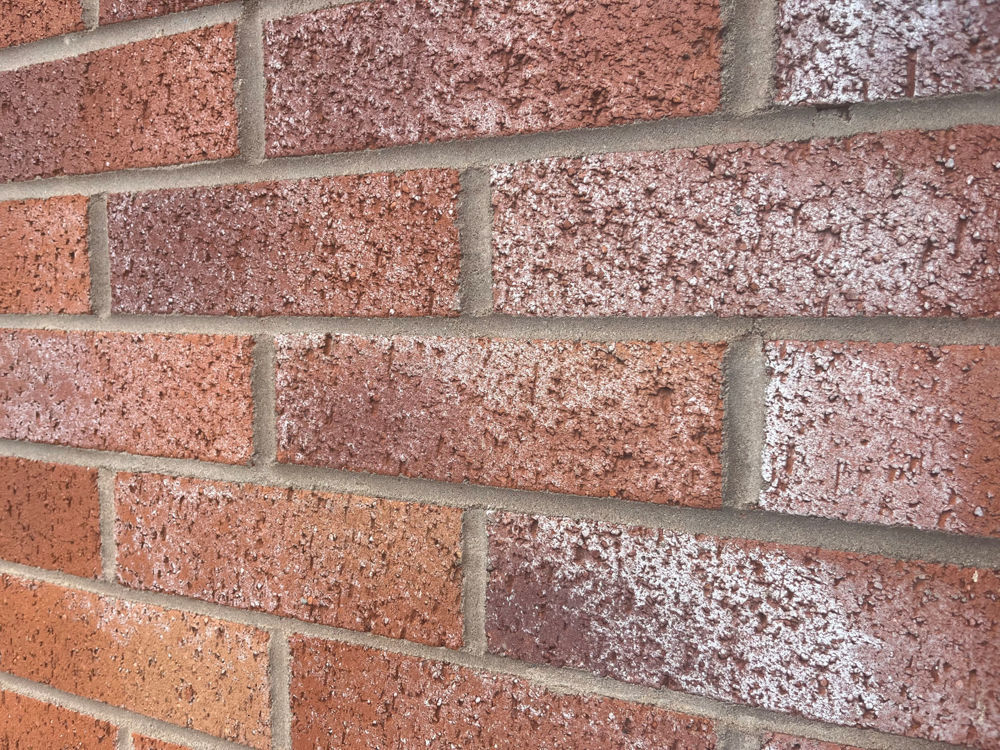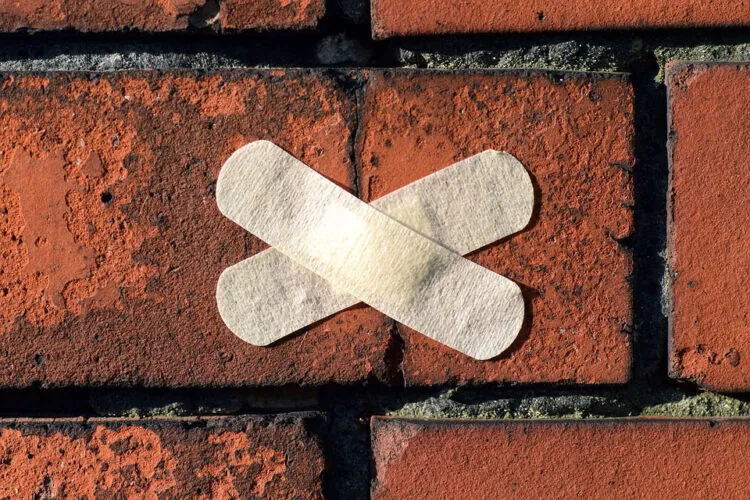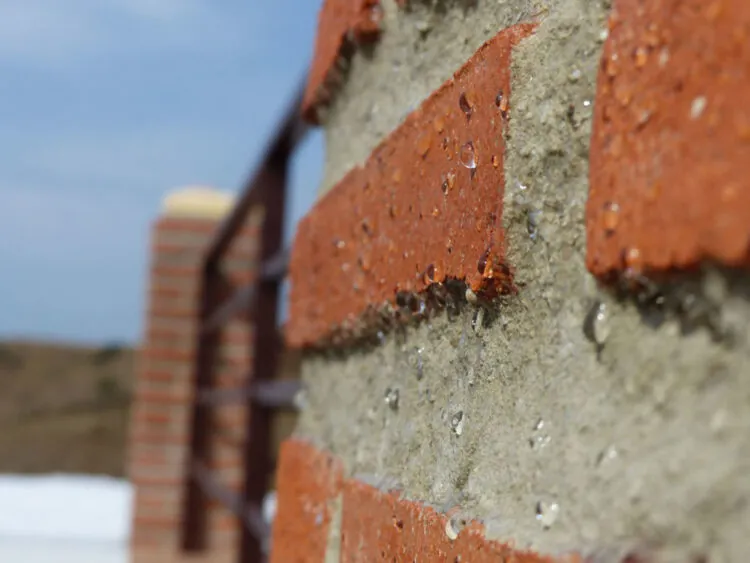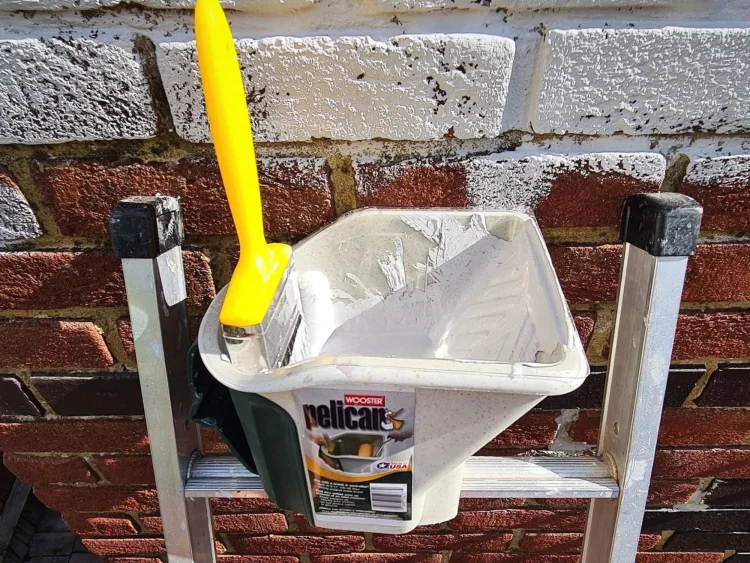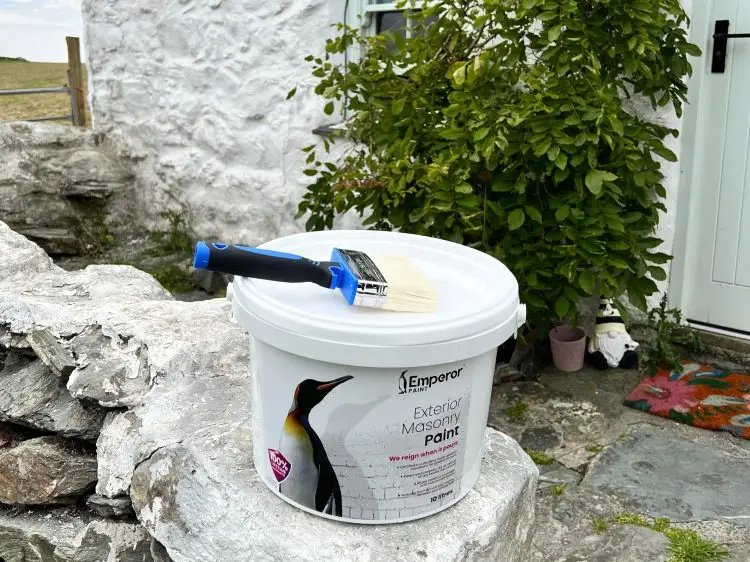How To Prevent Salt Efflorescence On Brick
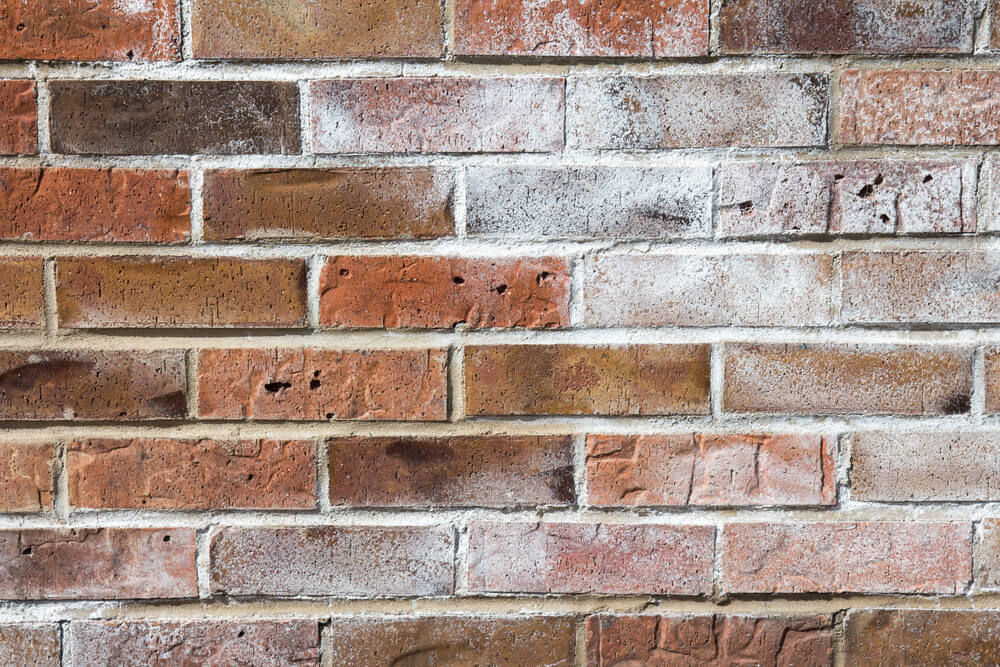
Efflorescence is one of the most common problems faced by homeowners in the UK, showing up as a white deposit on exterior bricks and masonry.
In this guide, we explain:
- What efflorescence is
- What causes it
- How you can remove efflorescence at home yourself
- How to prevent it coming back long-term
What Is Efflorescence?
You may not have been familiar with the term efflorescence until recently, but the chances are you have seen it on brickwork before.
Efflorescence or ‘salt efflorescence’ is a white deposit left on the surface of masonry and other porous materials.
Is it harmful? Efflorescence on brick is often not a structural issue, however, it does compromise the aesthetic appeal of your home. The problem is, the presence of efflorescence is an indication of a larger issue.
What Causes Efflorescence?
Efflorescence forms when two factors are present:
- Salt
- Water
Masonry materials such as brick, concrete, and stone are porous. They absorb water through a process called capillary action. As moisture moves through the material, it dissolves salts inside. When the water evaporates at the surface, the salts remain as a white deposit.
Efflorescence can appear in two ways:
- During construction – As bricks and mortar dry out, they can release salts, making efflorescence particularly prominent on new-builds. This is known as ‘new building bloom’.
- After construction – On all properties, exterior walls can absorb moisture over time. Prolonged exposure to this water ingress often leads to efflorescence.
In simple terms, efflorescence only occurs when moisture travels through masonry. Without this movement, salts remain locked inside the material.
It is more common after extended periods of heavy weathering or during low temperatures, where building materials become saturated with water over time.
How To Remove Efflorescence On Brick
While efflorescence is easier to prevent than remove, most homeowners face it after it appears.
The good news is that efflorescence can be removed from bricks yourself.
1. REMOVING LIGHT EFFLORESCENCE
In some cases, using a dry, stiff brush can remove the vast majority of salt deposits from masonry.
Remember to wear protective goggles and a mask when brushing the efflorescence as the powdery salt deposits can cause irritation.
Top tip: Pick a dry spell to do this, as this will ensure the deposits come to the surface, making them easier to brush off.
2. REMOVING HEAVIER EFFLORESCENCE
On more stubborn deposits, a low-pressure washer can dissolve and wash away the salts.
Be aware however that these salts can be partially re-absorbed by the bricks, or even bring more of these salts back to the surface as it dries.
This means that the process may require multiple brushes and washes to fully remove all deposits.
For a slightly stronger cleaning solution, a 50/50 mix of white vinegar and water can help to spot treat large areas that are prone to salt efflorescence thanks to the acidity in the vinegar.
Keep in mind, these methods remove surface salts but do not address the underlying cause. Without addressing this, the efflorescence will likely begin to bloom again.
How To Prevent Efflorescence
The migration of the efflorescence can only be prevented long-term by eliminating the movement of moisture through the masonry.
When researching treatments for protecting exposed masonry and brickwork, you will find two common options; a masonry sealer or a masonry cream.
Masonry Sealer
A traditional form of brick waterproofer, sealers are designed to create a film across the surface of masonry.
This film seals the pores of the masonry, reducing water absorption, but also impacting the breathability of the wall.
By impacting the breathability, you are preventing it from expelling water vapour that naturally builds up inside a property. Over a period of time, this moisture will lead to damp and structural problems.
After a matter of months, it is likely to eventually cause the film of the sealer to break, allowing water to absorb into the brickwork once again.
Because of the damaging effect that low breathability products can have on exterior walls, sealers have often created the perception that waterproofing brick causes more harm than good. Furthermore, use of film-forming coatings is discouraged by many brick manufacturers, including The Brick Industry Association.
The reality is however, as technology has developed, not all waterproofing treatments work in the same way today.
Learn more: The importance of breathability
MASONRY CREAM
Innovative products like Emperor Masonry Creme were developed to solve these problems by working in a completely different way.
While sealers work by creating a plastic film on the surface of bricks, masonry cream is designed to penetrate deep into the masonry and line the pores, using clever nano-technology.
This means that rain (as a liquid) is repelled from the surface, while water vapour (as a gas) can naturally pass through the pores of the wall.
By keeping the bricks dry, while maintaining full breathability, these treatments are perfect for not only reducing efflorescence, but all of the other problems you may be experiencing, from the high levels of moisture, from penetrating damp to damaged brickwork.
There is another trick up the sleeve of these products. The super hydrophobic surface created is also self-cleaning. When rain falls, the water forms beads that roll across the surface and run off, carrying away any dirt and loose salt deposits.
This helps progressively reduce the amount of efflorescence, as the moisture levels of the building material decreases over time.
Not all masonry creams work to this level. Performance depends on the quality of the formulation and crucially, the breathability.
Learn more: How nano-technology works
Laboratory Testing
Emperor Masonry Creme was tested by an independent UKAS accredited laboratory who conducted a 25 year accelerated weathering test, to see how it could reduce moisture levels over time.
Part of a brick wall was treated with the product, while the middle section was left untreated.
After exposure to extreme weathering, the section of the wall that wasn’t treated with Emperor Masonry Creme, shown below, was heavily affected by thick salt deposits, while the treated sections (right and left) showed far less efflorescence in comparison.
Learn more: How independent testing was conducted
Frequently Asked Questions
What happens if you paint over efflorescence?
Before painting masonry that is suffering from efflorescence on the brick, you must remove all previous salt deposits as this could impact the ability for the masonry paint to adhere to the wall.
If you are applying a masonry cream, you do not need to remove all efflorescence as this will be drawn through the brick and cleaned off easily due to the self-cleaning surface created.
This is different to paint as masonry cream does not create a paint film that efflorescence can break.
Is efflorescence harmful?
Efflorescence is not dangerous to your health, although it is an indication of potential moisture problems that are harmful to your health and the health of your home.
If you want to see how healthy your walls are, use our handy wall health check to spot issues early and keep your home stress free.
Will efflorescence go away?
While some deposits weather away after time, efflorescence will not go away of its own accord if the source of the moisture is not resolved.
If the source of the moisture is prevented using a treatment such as Emperor Masonry Creme, the efflorescence will gradually reduce over the course of 6-12 months.
Is efflorescence a sign of damp?
Yes, there is a clear link between efflorescence and damp, more specifically penetrating damp.
This doesn’t mean that all properties with efflorescence will suffer damp problems, but it does confirm that there is moisture present within the wall. That moisture can cause or contribute to underlying problems that may also appear as damp.
How do I prevent efflorescence on a painted brick wall?
If you apply a standard masonry paint to a bare brick wall that is suffering from efflorescence, the moisture that causes the efflorescence will become trapped in the same way a sealer would trap it.
This is because acrylic masonry paints often have low breathability, meaning the moisture that transfers the salt becomes trapped, resulting in a build-up of the salt.
Eventually, the salt can bloom and cause the paint film to peel. We recommend using a highly breathable paint like Emperor Masonry Paint to prevent these problems long-term.
We hope this article has answered any questions you may have had regarding efflorescence and how you can prevent it.
If you would like advice on how best to tackle your project, our team of experts are on hand to give you advice specific to your home. You can chat to them by emailing [email protected] or by calling 01254 936121.
Ready to start? Order your sample of Emperor Masonry Creme to see how it works for yourself.
This article was written by the Emperor Technical Team, a group of experts with an average of over 25 years experience in the building industry. They work daily with homeowners, tradespeople and specification professionals to deliver practical, expert guidance that promotes long-term results, supports wall health and helps create homes that are prepared for the future.


